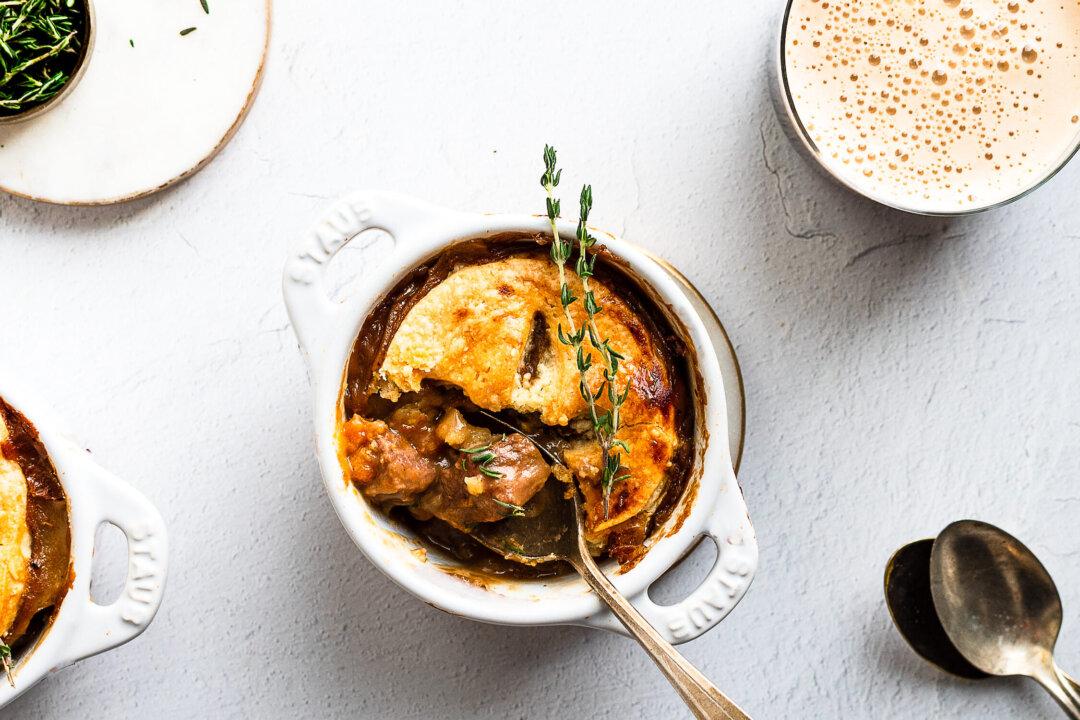With St. Patrick’s Day right around the corner, you’ll find all sorts of Irish American foods popping up on menus. There’s the classic boiled dinner of corned beef and cabbage, and buttered soda bread with its tender, biscuit-like crumb. Added to these wholesome traditions, you’ll find decidedly unorthodox, but popular treats such as green-tinted shamrock shakes and clover-shaped cookies. And it goes without saying, of course, that there will be plenty of beer (colored green or not).
While you might want to drink your fill this year, I’d recommend adding it to the stew pot instead. There’s another Irish-inspired supper that’s worth making: beef and stout pie. You’ll find a house version in almost every pub in Ireland.





